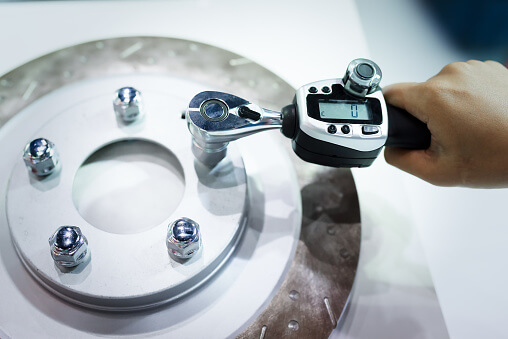5 Easy Steps for Calibration Torque Wrenches
It may seem like a luxury, especially if it’s going to spend most of its life in the toolbox. But torque wrenches really are useful – and absolutely necessary for some. If something needs to be tightened with exactly the right amount of twisting force or tension, such as to avoid damage whilst resisting under or un-tightening, it’s been the go-to tool for both individuals and especially the world of industry for over 100 years.
Over that century, many different iterations of torque wrenches have emerged: the familiar “click” wrench for every handy business’ toolbox, the “beam” torque wrench for the automotive industry, the “split beam” version for high accuracy, the electronic versions so commonly deployed across the industrial and even aerospace sectors – and many more.
But if your particular application or industry calls for the occasional or regular use of torque wrenches, there’s something even worse than not having one in the toolbox at all: trying to use a poorly calibrated one. Remember, the whole point of a torque wrench is to rely on its high precision, and ensuring that means both looking after it but also having it regularly and properly calibrated.
And the really great news is that if you’re in the vast majority of torque wrench users in the standard “click” wrench category, you can add a few dollars to your bottom line by doing that calibration all by yourself. How?
Let’s run through the X steps for quickly and properly calibrating a torque wrench. All you need is a marker and paper, a tape measure with inches, a vice (or equivalent), a 10-15kg weight, and some strong string:
1. Measure
Use your tape measure to measure a distance from the attachment point to a point on the handle. As long as you mark with your marker the precise point on the handle, and write down the measurement so you don’t forget it, that’s all you need to do here. Remember to use a whole number (in cm) rather than a decimal.
2. Secure
Next, use the vice – or another method for securing the tool – to trap the wrench in place whilst allowing the handle to move freely. Just make sure there’s enough room around it for the next steps, and think about having some sturdy shoes on in case something else goes wrong as we proceed.
3. Calculate
To perform the calibration for our metric system, first we’ll need to convert whatever weight you’re using to Newtons by multiplying the kilograms by 9.807 precisely. If it’s a 10kg weight, the calculation will be 10 x 9.807 = 98.07 Newtons. Now, multiple 98.07 by the measured length – let’s say it’s 60cm. So it will be 98.07 x 0.60 (metres) = 50.84 Newton metres.
4. Check calibration
Now, secure the string/rope to the weight, create a loop that can be slid over the handle of the torque wrench, and make sure the string isn’t so long that the weight is touching the ground.
5. Adjust calibration
Most standard torque wrenches are manually adjustable with this method via an adjustment screw located on the handle. So once you’ve hung that 10kg weight from the mark you made earlier, did the wrench click?. If it did, use the adjustment to set your wrench for the correct Newton metres. If it didn’t click, turn the screw clockwise, relieve the pressure from the weight, and then hang it again to perform another test. Once it clicks, you’re there.
If this method doesn’t work for your particular torque wrench iteration, you’ll need to consult with an expert. But whether it can be done simply or you need to go a little more effort, it’s crucial you have the confidence of a fully-calibrated torque wrench to complete your crucial tasks properly and safely. Best of luck with it!
